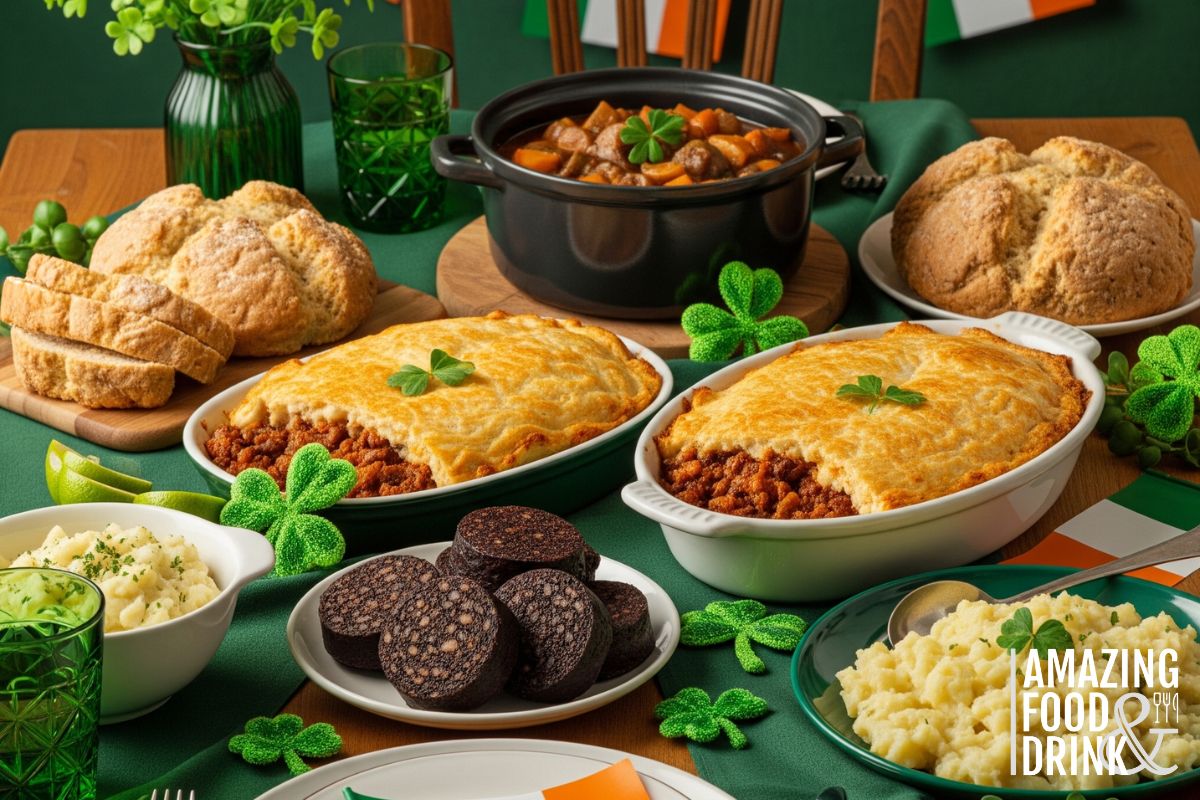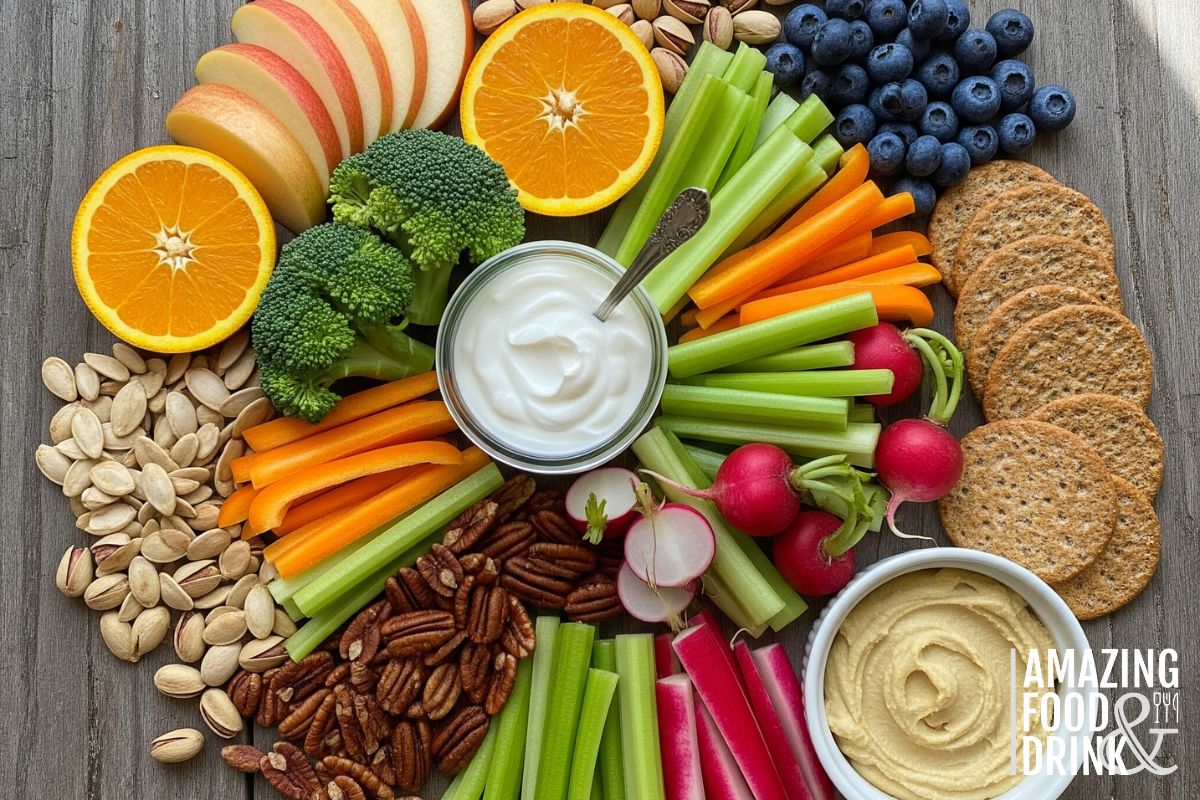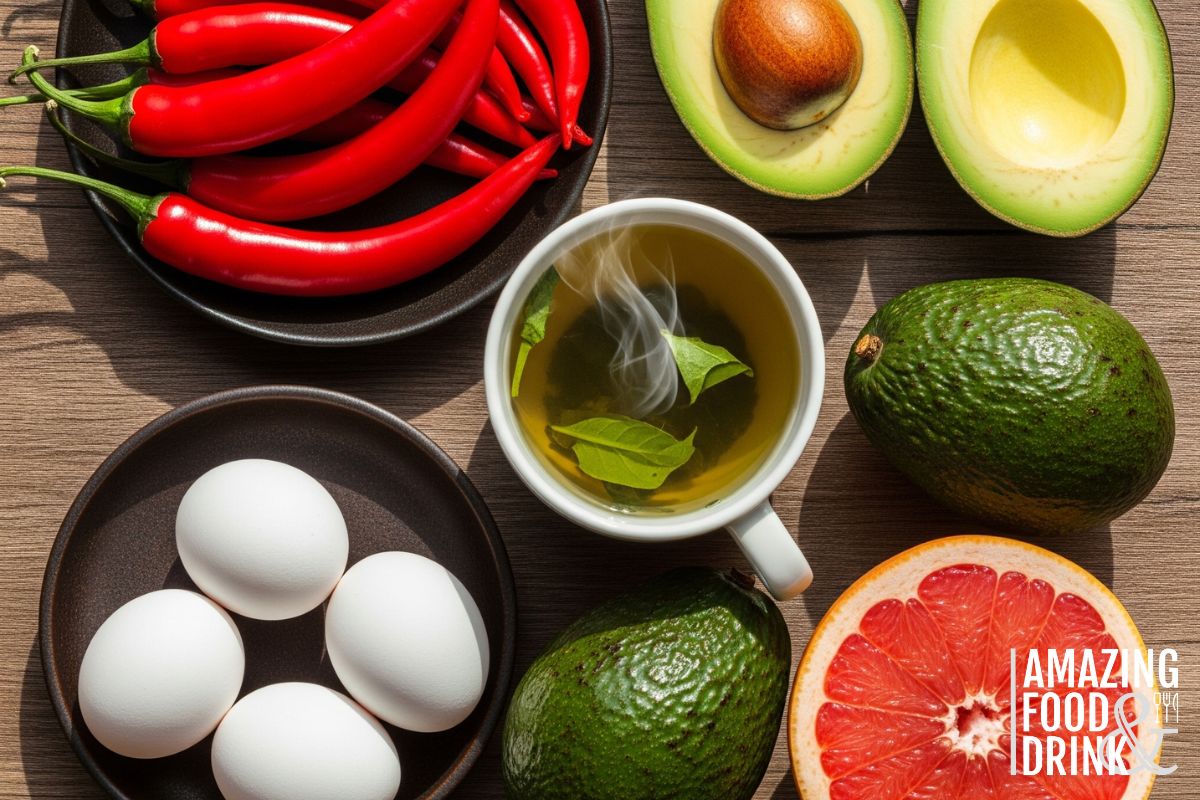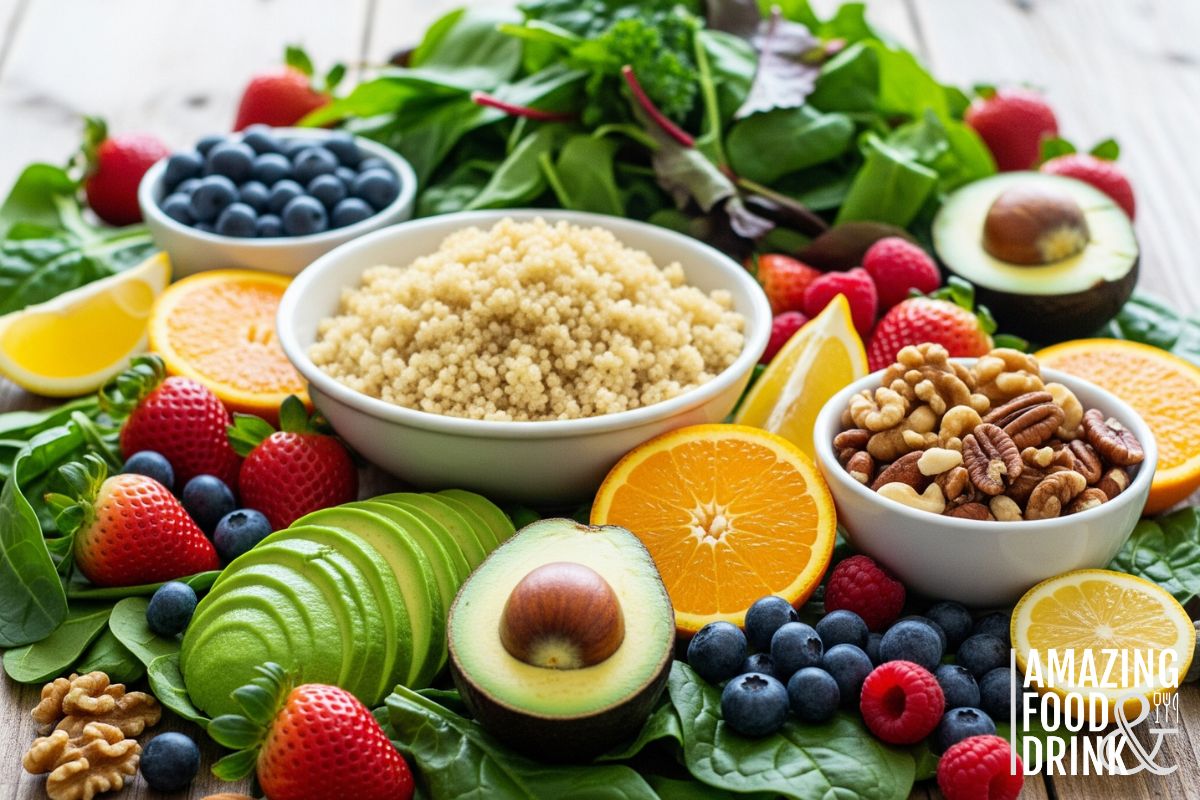St. Patrick’s Day celebrates Irish culture and heritage through vibrant traditions, and nothing captures the spirit quite like traditional Irish food. Whether planning an authentic Irish dinner or hosting a St. Patrick’s Day party, these classic recipes will transport you straight to the heart of Ireland.
From hearty stews to comforting pies, Irish cuisine reflects the resourcefulness and warmth of its people. These traditional dishes aren’t just meals, they’re stories passed down through generations, each bite connecting us to centuries of Irish culinary heritage.
Table of Contents
The History of St. Patrick’s Day Food Traditions

St. Patrick’s Day honours the saint who brought Christianity to Ireland in the 5th century. Originally a religious observance celebrated on 17 March, the traditional date of Saint Patrick’s death, the holiday has evolved into a global celebration of Irish culture and heritage.
Traditional Irish food plays a central role in these celebrations. Many dishes we associate with St. Patrick’s Day today reflect Ireland’s agricultural heritage, featuring ingredients like potatoes, cabbage, and hearty root vegetables. Others showcase the creativity of Irish immigrants who adapted their beloved recipes using available ingredients in new countries.
The emphasis on sharing meals during St. Patrick’s Day stems from Irish hospitality and community values. Traditional dishes bring families and friends together, creating lasting memories while honouring Irish culinary traditions.
Essential Traditional Irish Dishes for St. Patrick’s Day
These authentic Irish recipes represent the heart of Ireland’s culinary tradition. Each dish tells a unique story, from humble peasant foods transformed into beloved classics to regional specialities that showcase Ireland’s diverse landscape.
Whether you’re seeking hearty main courses, comforting sides, or traditional desserts, these time-honoured recipes will help you create an unforgettable St. Patrick’s Day feast that celebrates genuine Irish flavours and heritage.
Corned Beef and Cabbage Recipe

Prep Time: 20 minutes | Cook Time: 3 hours | Serves: 6 | Difficulty: Easy
Despite being synonymous with St. Patrick’s Day, corned beef and cabbage originated with Irish immigrants in America rather than Ireland itself. Facing economic hardship in the 19th century, Irish Americans adapted this hearty dish using readily available ingredients.
Key Ingredients:
- Corned beef brisket
- Fresh cabbage
- Potatoes
- Carrots
- Onions
The traditional preparation involves slow-cooking the corned beef until tender, then adding vegetables during the final cooking stages. The result is a comforting, flavourful meal that’s become an authentic part of Irish-American cuisine.
Cooking Tips: Allow 50 minutes per pound for the corned beef, and add vegetables in stages, potatoes first, then carrots, and cabbage last to prevent overcooking.
Shepherd’s Pie (Traditional Irish Recipe)

Prep Time: 25 minutes | Cook Time: 45 minutes | Serves: 8 | Difficulty: Medium
Authentic shepherd’s pie represents the pinnacle of Irish comfort food. This layered masterpiece features seasoned ground lamb (not beef, which would make it cottage pie), topped with creamy mashed potatoes and baked to golden perfection.
Essential Components:
- Ground lamb
- Mixed vegetables (peas, carrots, onions)
- Rich gravy
- Fluffy mashed potatoes
- Fresh herbs (rosemary, thyme)
Traditional Irish recipes often include a splash of Worcestershire sauce and sometimes a hint of tomato paste for depth. The secret lies in properly seasoning each layer and achieving the perfect potato topping smooth enough to spread yet textured enough to create beautiful peaks when baked.
Black Pudding (Irish Blood Sausage)
Prep Time: 15 minutes | Cook Time: 10 minutes | Serves: 4 | Difficulty: Easy to prepare
Black pudding might sound intimidating, but this traditional Irish delicacy offers a surprisingly rich, earthy flavour. Despite its name, the blood acts as a binding agent rather than dominating the taste profile.
Traditional Ingredients:
- Pork or sheep’s blood
- Oats or barley
- Pork fat
- Seasonings (mint, thyme, pepper)
The combination creates a dense, satisfying sausage with complex umami flavours. Modern versions are readily available from Irish butchers and speciality food shops, making this authentic taste of Irish heritage accessible to home cooks.
Serving Suggestion: Pan-fry slices until crispy outside and serve with traditional Irish breakfast items or incorporate into stews for added richness.
Boxty (Irish Potato Pancakes)

Prep Time: 30 minutes | Cook Time: 20 minutes | Serves: 6 | Difficulty: Medium
Boxty represents Ireland’s love affair with potatoes in its most delicious form. These unique potato pancakes combine grated raw and mashed potatoes, creating an irresistible, crispy, fluffy texture.
Traditional Recipe Components:
- Raw grated potatoes
- Mashed potatoes
- Plain flour
- Buttermilk
- Salt and pepper
The key to perfect Boxty is balancing the moisture content and achieving consistency. The batter should be thick enough to hold together yet loose enough to spread in the pan.
Cultural Note: A Traditional Irish saying goes: “Boxty on the griddle, Boxty on the pan. If you can’t make Boxty, you’ll never get a man!”
Barmbrack (Irish Tea Cake)

Prep Time: 20 minutes (plus soaking time) | Cook Time: 1 hour | Serves: 10 | Difficulty: Easy
Barmbrack, affectionately called “brack,” offers a delightful sweet conclusion to your St. Patrick’s Day feast. This dense, fruit-laden bread traditionally contains hidden charms that predict the future, making it delicious and entertaining.
Traditional Ingredients:
- Mixed dried fruit (soaked in tea)
- Plain flour
- Brown sugar
- Egg
- Mixed spice
- Butter
The overnight soaking of fruit in strong tea creates the cake’s distinctive flavour and moist texture. Traditional versions might hide a ring (marriage), a coin (wealth), or a piece of cloth (travel) within the bread.
Modern Twist: Even without fortune-telling elements, barmbrack makes an excellent teatime treat, particularly warmly served with Irish butter.
Cottage Pie Recipe
Prep Time: 20 minutes | Cook Time: 40 minutes | Serves: 6 | Difficulty: Easy
Often confused with shepherd’s pie, cottage pie uses minced beef instead of lamb, creating a robust, satisfying meal perfect for St. Patrick’s Day celebrations. This traditional dish showcases the Irish talent for transforming simple ingredients into extraordinary comfort food.
Core Ingredients:
- Minced beef
- Onions and carrots
- Beef stock
- Worcestershire sauce
- Mashed potatoes
- Cheese (optional)
The secret to exceptional cottage pie is properly browning the mince and building flavour layers. Many Irish families add a stout or red wine splash to deepen the gravy’s richness.
Assembly Tip: Use a fork to create decorative patterns on the potato topping. This isn’t just aesthetic; it increases the surface area for better browning.
Irish Chicken and Leek Pie

Prep Time: 45 minutes | Cook Time: 35 minutes | Serves: 6 | Difficulty: Medium
This elegant pie represents the sophisticated side of traditional Irish cuisine. Tender chicken, sweet leeks, and flaky pastry create a comforting and refined dish for special occasions.
Signature Ingredients:
- Free-range chicken pieces
- Fresh leeks
- Cream or crème fraîche
- Fresh herbs (parsley, tarragon)
- Puff pastry
- White wine
Traditional preparations often include mushrooms and sometimes bacon for extra depth. The creamy sauce should coat the ingredients without being too thick, ensuring perfect balance in each bite.
Pastry Tip: Brush the pastry with beaten egg for that golden shine, and cut steam vents to prevent soggy bottoms.
Traditional Fish Pie

Prep Time: 30 minutes | Cook Time: 35 minutes | Serves: 8 | Difficulty: Medium
Also known as fisherman’s pie, this coastal Irish favourite celebrates the island’s abundant seafood. The combination of flaky white fish, prawns, and rich sauce creates a luxurious dish that’s surprisingly approachable for home cooks.
Fresh Ingredients:
- Mixed white fish (cod, haddock)
- Prawns or Dublin Bay prawns
- Hard-boiled eggs
- Mature cheddar cheese
- Mashed potatoes
- Cream and butter
The traditional preparation involves poaching fish in milk, which becomes the base of the creamy sauce. This technique ensures maximum flavour while maintaining the fish’s delicate texture.
Serving Note: Allow the pie to rest for 10 minutes after baking. This helps the filling set and makes serving much easier.
Dublin Coddle Recipe
Prep Time: 15 minutes | Cook Time: 1.5 hours | Serves: 6 | Difficulty: Easy
Dublin coddle represents Irish resourcefulness at its finest. This hearty one-pot meal traditionally uses leftover sausages and bacon, transforming them into something greater than the sum of their parts.
Traditional Components:
- Irish pork sausages
- Streaky bacon
- Potatoes
- Onions
- Fresh parsley
- Chicken or vegetable stock
The gentle cooking method allows flavours to meld beautifully whilst maintaining distinct textures. Each ingredient contributes to a warming, satisfying meal perfect for chilly March evenings.
Historical Note: Dublin coddle was particularly popular on Saturdays, as it could simmer whilst families attended weekend activities.
Irish Beef and Guinness Stew

Prep Time: 25 minutes | Cook Time: 2.5 hours | Serves: 8 | Difficulty: Medium
No collection of traditional Irish food would be complete without this iconic stew. The addition of Guinness transforms ordinary beef stew into something distinctly Irish, adding deep, complex flavours that perfectly complement the tender meat and vegetables.
Authentic Ingredients:
- Beef chuck or shin
- Guinness stout
- Root vegetables (carrots, parsnips)
- Onions and garlic
- Fresh thyme and bay leaves
- Irish butter and flour
The slow-cooking process allows the Guinness to mellow, contributing richness rather than bitterness. Traditional recipes often include brown sugar to balance the stout’s intensity.
Cooking Secret: Brown the meat in batches to develop proper caramelisation. This creates the foundation for exceptional flavour.
How to Plan Your St. Patrick’s Day Menu

Creating an authentic Irish feast requires thoughtful planning. Consider your guests’ preferences and cooking abilities when selecting dishes. A traditional approach might include:
- Starter: Black pudding with soda bread
- Main Course: Choose between Dublin coddle, Irish stew, or corned beef and cabbage
- Side Dishes: Boxty, colcannon, or roasted root vegetables
- Dessert: Barmbrack with Irish coffee
Make-Ahead Tips:
- Prepare stews and pies the day before; they often taste better after resting
- Soak barmbrack fruit overnight
- Prep vegetables in advance
- Make extra gravy, it’s always needed!
Drink Pairings: Traditional options include Irish stout, whiskey, or Irish breakfast tea. For non-alcoholic alternatives, consider sparkling apple cider or traditional Irish breakfast tea.
These traditional Irish food recipes offer more than delicious meals; they connect us to Ireland’s rich culinary heritage and the warmth of Irish hospitality. Whether preparing corned beef and cabbage or trying your hand at authentic Dublin coddle, each dish tells a story of tradition, community, and the enduring spirit of Irish culture. This St. Patrick’s Day, celebrate with authentic flavours that have brought families together for generations.
FAQs
1. What is the most traditional food for St. Patrick’s Day?
Corned beef and cabbage is the most popular St. Patrick’s Day dish globally, though it originated with Irish immigrants in America rather than Ireland itself. In Ireland, traditional foods include Irish stew, bacon and cabbage, and Dublin coddle.
2. What do Irish people eat on St. Patrick’s Day?
In Ireland, families typically enjoy Irish stew, bacon and cabbage, soda bread, colcannon (mashed potatoes with cabbage), and traditional desserts like barmbrack. The celebration focuses more on quality family time than specific ceremonial foods.
3. How do you plan a traditional Irish menu for St. Patrick’s Day?
Include a hearty main dish (Irish stew or corned beef), traditional sides (Boxty or colcannon), Irish soda bread, and finish with barmbrack or Irish coffee. Balance rich dishes with lighter sides and consider your guests’ dietary requirements.
4. What’s the difference between shepherd’s pie and cottage pie?
Shepherd’s pie uses ground lamb (shepherds tend sheep), while cottage pie uses ground beef. Both feature the same basic structure with a mashed potato topping, but the meat choice significantly affects flavour.
5. How far in advance can I prepare Irish dishes?
Most Irish stews and pies improve when made a day ahead, allowing flavours to develop. Barmbrack keeps well for several days, whilst dishes like Boxty are best served fresh. Plan accordingly based on your chosen recipes.



